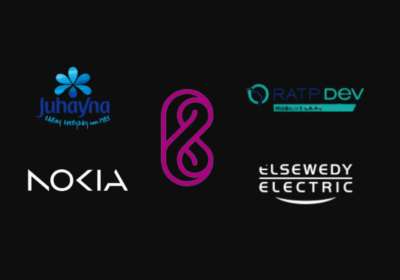Micromanagement is typically a dirty word. Just hearing that term conjures images of stifled creativity, frustrated employees, and overworked managers. Similar to any management style, micromanagement is not binary; it can be both beneficial and detrimental depending on the situation. Is micromanagement only justified as a tool of precision and success under certain circumstances? On the flip side, its overuse or misuse can have significant trade-offs—ouch—for both the manager and their team.
When Micromanagement Helps
1. Complex or High-Stakes Tasks
 This cannot be overstated in industries where a small mistake can wield major consequences (such as pharmaceuticals, aerospace, or fintech). In these domains, micromanagement can work effectively. Tracking every phase of a project helps managers keep an eye on progress and ensures that no small detail is neglected before everything goes wrong. This kind of supervision is often necessary in high-stakes projects with minimal room for error.
This cannot be overstated in industries where a small mistake can wield major consequences (such as pharmaceuticals, aerospace, or fintech). In these domains, micromanagement can work effectively. Tracking every phase of a project helps managers keep an eye on progress and ensures that no small detail is neglected before everything goes wrong. This kind of supervision is often necessary in high-stakes projects with minimal room for error.
 Micromanagement can provide valuable guidance to those who are new or relatively unskilled in their jobs. By offering regular supervision and direct feedback, managers can help these employees grow in their roles. As employees become more comfortable with a task, managers can reduce their level of oversight from micromanagement to a more established working relationship. This approach helps build a solid foundation of skills and knowledge that will be beneficial in the long run.
Micromanagement can provide valuable guidance to those who are new or relatively unskilled in their jobs. By offering regular supervision and direct feedback, managers can help these employees grow in their roles. As employees become more comfortable with a task, managers can reduce their level of oversight from micromanagement to a more established working relationship. This approach helps build a solid foundation of skills and knowledge that will be beneficial in the long run.
3. Crisis Management
 During a crisis, where clear, unequivocal action must be taken quickly, micromanagement can help ensure everyone is on the same page. Having a single person in command can reduce decision-making time and improve coordination during such times, making it easier for the team to recognize and respond appropriately. When things are turbulent, the advantages of micromanagement can provide the necessary structure and clarity.
During a crisis, where clear, unequivocal action must be taken quickly, micromanagement can help ensure everyone is on the same page. Having a single person in command can reduce decision-making time and improve coordination during such times, making it easier for the team to recognize and respond appropriately. When things are turbulent, the advantages of micromanagement can provide the necessary structure and clarity.
When Micromanagement Hurts
1. Employee Morale and Trust
 Micromanagement lowers employee morale. Frequent supervision conveys the message that management does not believe in an employee’s ability to think for themselves. This can lead to lower job satisfaction, disengagement, and ultimately higher turnover. Employees who feel undervalued are generally less motivated and committed to their work, a situation that is detrimental to overall productivity and team cohesion.
Micromanagement lowers employee morale. Frequent supervision conveys the message that management does not believe in an employee’s ability to think for themselves. This can lead to lower job satisfaction, disengagement, and ultimately higher turnover. Employees who feel undervalued are generally less motivated and committed to their work, a situation that is detrimental to overall productivity and team cohesion.
2. A Damper on Creative Innovation
 Creativity thrives in organizations where people are free to play, take risks, and make decisions independently. Micromanagement can stifle creativity because it emphasizes control and precision. Employees may become risk-averse, avoiding actions that could lead to scrutiny. It takes courage to evolve and adapt, but the fear of making mistakes can hinder the development of exciting new ideas and innovative solutions—a sure-fire way to make your workplace less dynamic.
Creativity thrives in organizations where people are free to play, take risks, and make decisions independently. Micromanagement can stifle creativity because it emphasizes control and precision. Employees may become risk-averse, avoiding actions that could lead to scrutiny. It takes courage to evolve and adapt, but the fear of making mistakes can hinder the development of exciting new ideas and innovative solutions—a sure-fire way to make your workplace less dynamic.
 The burden, often falling on managers, is a common outcome of micromanagement. When managers feel the need to control every aspect of their team’s work, they end up overworked and burnt out. This detracts from their strategic focus, pulling them away from high-level issues better suited for executive leadership. Micromanagement can become a vicious cycle, producing long-term effects that are counterproductive and stressful for team members.
The burden, often falling on managers, is a common outcome of micromanagement. When managers feel the need to control every aspect of their team’s work, they end up overworked and burnt out. This detracts from their strategic focus, pulling them away from high-level issues better suited for executive leadership. Micromanagement can become a vicious cycle, producing long-term effects that are counterproductive and stressful for team members.
 Ironically, the approach intended to foster efficiency often results in inefficiency. Managers can slow down decision-making and workflow by getting involved in the minutiae of details. This can lead to employees waiting for approvals or documents on trivial matters that do nothing but hold up the process and reduce overall efficiency. In practice, this can make the work dynamic more reactive than proactive—problematic for any team working toward deadlines or long-term goals.
Ironically, the approach intended to foster efficiency often results in inefficiency. Managers can slow down decision-making and workflow by getting involved in the minutiae of details. This can lead to employees waiting for approvals or documents on trivial matters that do nothing but hold up the process and reduce overall efficiency. In practice, this can make the work dynamic more reactive than proactive—problematic for any team working toward deadlines or long-term goals.

Micromanagement has its place in effective leadership. It’s important to remember that different types of management apply to various contexts. While some degree of close supervision may be warranted, it must be paired with trust and empowerment. Managers who maintain open lines of communication with their teams and encourage autonomy are less likely to find it necessary to micromanage.
By striking a balance, managers can wield the tool of micromanagement without it backfiring. This approach not only boosts productivity but also fosters a more resilient and motivated team.




























